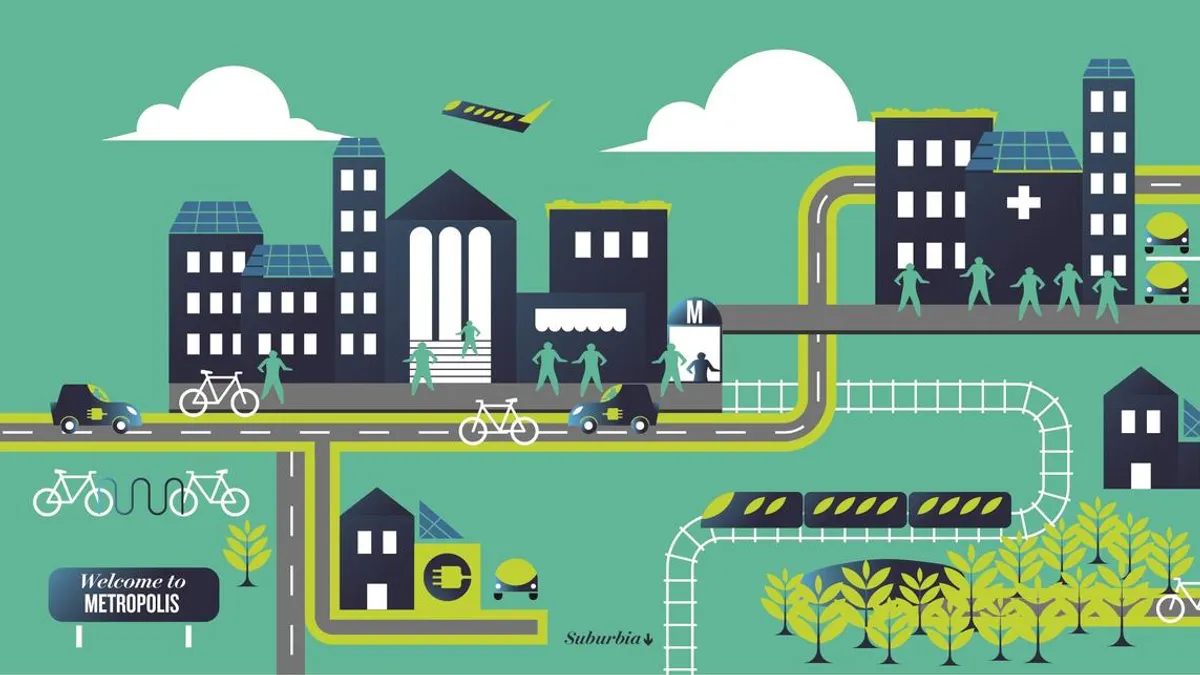Dive Brief:
- A report issued yesterday by the Natural Resources Defense Council (NRDC) calls on cities and states in the Northeast and Mid-Atlantic to think on a regional basis about transportation and cut pollution by using more electric vehicles (EVs).
- The report calls for significant investment in public transportation, including in major cities like New York, with officials saying the lack of investment has led to the rise in ride-hailing services such as Uber and Lyft transit ridership has declined.
- "Our transportation system is broken. It needs an extreme makeover. Everyone has a story — we suffer in gridlock, choke on car and truck exhaust, drive on decaying roadways, cope with substandard public transit, and walk and bike on dangerous streets," Bruce Ho, the report’s principal author, said on a conference call with reporters.
Dive Insight:
NRDC took its inspiration for this report from the Regional Greenhouse Gas Initiative (RGGI), where several Northeast states established a mandatory program in 2009 to reduce carbon emissions. For cities, NRDC recommended developing more walkable neighborhoods and affordable housing near transit stations, something that is advancing in cities like Los Angeles. NRDC also said more electric buses and other clean vehicles should be used, another initiative more and more transit companies are following.
But the report also calls for aggressive investment and rebuilding of public transportation and its related infrastructure — especially in cities like New York — where traffic congestion cost the economy $34 billion in 2017. The city’s subway system has come in for severe criticism for its state of repair, something new chief Andy Byford hopes to remedy with an aggressive rebuilding plan.
It also calls for the proposed Gateway project to expand and renovate sections of the Northeast corridor rail line to be pursued aggressively. On the conference call, Tom Wright, president & CEO of the Regional Plan Association (RPA), called Gateway "the most important infrastructure investment in the nation, we believe."
"These investments are more crucial now than ever," he added.
Ride-hailing services like Uber and Lyft have been blamed in part for the fall in transit ridership, but both companies have started to integrate more with public transportation as they seek to be more than just about hailing car rides. Ho said that technology can be useful to help make it easier for people to take transit, but while there is "potential there" for ride-hailing to link people to transit stations, the research is "not conclusive on whether ride-hailing will be a boon or a detriment" to transit.
"We think that there's potential there to leverage the ride-hailing growth and ride-hailing services in order to facilitate more efficient and wider use of public transportation, but of course there are potential risks there as well," he said.
Reducing carbon emissions in the transportation sector is a key point of emphasis in this report, which notes 39% of carbon pollution in the region comes from transportation. The report found cutting carbon pollution could create 125,000 new jobs and add $17.7 billion to the region’s economy by 2030, and although Ho said it will require "a strong commitment from state and city leaders to invest in clean vehicles and modern infrastructure," RGGI gives them hope.
"This report reminds us that another world is possible, one of clean transit, sustainable communities and good, family-supporting careers,” Omer Khwaja, New York campaign director for Jobs to Move America, said on the conference call. "This world is possible for workers, commuters, taxpayers and we can all help bring it to fruition."












